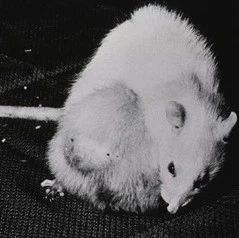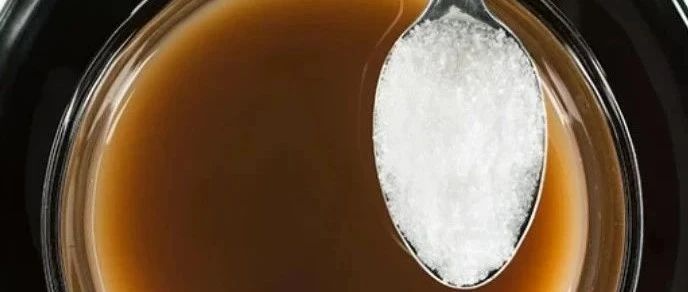
人类 iPSC分化为神经细胞(红色)
日本科学家在1月9号的Nautre杂志发表了干细胞研究新成果。在这项研究中,研究者利用重编程的小鼠细胞生成了皮肤和骨髓。研究发现将这些再生的皮肤与骨髓移植到具有遗传一致性的小鼠后不会出现强烈的免疫反应。这一研究将重燃研究者利用诱导多能干细胞(iPSC)治疗疾病的希望。
在2011年,同样发表在Nature上的一项研究将这种实验性治疗技术置于质疑声中,在那项研究中,研究者发现诱导多能iPSC即便是重新注射到其来源供体中也会引发免疫系统的排斥。[查看论文]
上述的两项互相矛盾的研究在技术上的差异使得很难评估iPSC是否真的没有遭受免疫攻击的危险。不过,未参与研究的美国加州大学细胞生物学家Paul Knoepfler表示,新的研究“非常激励人心”。他表示,这一研究成果表明,将来对人类患者实施基于其自身iPSC细胞的治疗可能不会临床行的重大免疫反应。
在2006年,日本科学家山中伸弥首次建立了iPSC,并且因此而获得2012年的诺贝尔奖。山中伸弥的技术可以讲成体细胞重新变为干细胞样状态,这一技术为定制人体组织提供了非常有前景的解决方案,并且不会引发利用胚胎干细胞(ESC)开展相似研究而导致的伦理问题。理论上讲,iPSC细胞源自于患者本身的组织,因此将其重新移植回患者是不会引发免疫反应的。
但是,美国加州大学的研究者Yang Xu在2011年的一项研究推翻了这一理论。Yang Xu的研究团队利用小鼠的皮肤细胞生成iPSC并将之移植到与供体鼠具有遗传一致性的受体鼠中。以相同方式将ESC注射到小鼠中会产生畸胎瘤以及包含各种细胞的肿瘤。但是在这项研究中并没有发现畸胎瘤的形成,因为iPSC细胞遭到了受体白细胞的攻击。
Yang Xu的这项研究引起了对iPSC医学应用的安全性担忧,但是日本放射线医学总合研究所(National Institute of Radiological Sciences)的Masumi Abe对此结果并不信服,他的研究小组利用更多的iPSC和ESC重复了Yang Xu的研究,结果却发现并不会出现免疫排斥现象。
Abe感觉到以是否形成畸胎瘤为判定条件是完全错误的方法。“由于畸胎瘤也是肿瘤的一种,它们会引发免疫反应不是奇怪的事情。”他说。在用于治疗时,iPSC通常是先被转化为其他类型的细胞,然后在进行移植的。Abe感觉到更重要的是需要对这些分化后的细胞的效果进行验证。
他的研究团队将iPSC或ESC分别融入到小鼠的胚胎中,这些胚胎随后发育为带有由干细胞分化而来的不同细胞类型的嵌合小鼠。然后,研究人员将这种小鼠的皮肤移植到其他具有遗传一致性的小鼠身上。结果表明,iPSC引发的微弱免疫反义并不比ESC所引发的强烈。相同的骨髓移植试验也得到了相同的结果。
这是非常具有前景的研究成果,但是Abe建立嵌合小鼠并用它们作为供体的技术引发了其他研究者的质疑。Yang Xu认为这种方法存在缺陷,因为在进行移植之前,嵌合小鼠的免疫系统可能已经排斥或耐受了源自iPSC的问题细胞,这可以解释为什么这些移植如此成功。但是这在临床上并不可行。人类iPSC在实验室培养中反而可以分化为更多特异性的细胞。这种差别非常重要,因为这类细胞在实验室中培养时可产生高免疫原性。
牛津干细胞研究所的Paul Fairchild认为正是这种差异导致了两项研究截然不同的结果。Yang Xu的研究发现,成体细胞重编程为iPSC提高了Zg16和Hormad1两个基因的表达,这两个基因是免疫系统的目标,而在Abe的嵌合小鼠中,研究人员并未发现这两个基因表达的增加。
“通过iPSC建立嵌合鼠,Abe的团队可能不经意间避开了免疫排斥的问题,因为相比体外的人工条件,这两个基因在正常的小鼠发育过程中更容易正确地发生沉默。” Fairchild说。由于iPSC细胞在人工条件下会转变为其他的细胞,因为要解决争议首要的是搞清哪种技术得到的iPSC分化后产品具有或不具有免疫原性。
原文:www.the-scientist.com/?articles.view/articleNo/33902/title/Debate-Over-Stem-Cell-Effectiveness

 Negligible immunogenicity of terminally differentiated cells derived from induced pluripotent or embryonic stem cells
Negligible immunogenicity of terminally differentiated cells derived from induced pluripotent or embryonic stem cells
Ryoko Araki et al.
The advantages of using induced pluripotent stem cells (iPSCs) instead of embryonic stem (ES) cells in regenerative medicine centre around circumventing concerns about the ethics of using ES cells and the likelihood of immune rejection of ES-cell-derived tissues. However, partial reprogramming and genetic instabilities in iPSCs could elicit immune responses in transplant recipients even when iPSC-derived differentiated cells are transplanted. iPSCs are first differentiated into specific types of cells in vitro for subsequent transplantation. Although model transplantation experiments have been conducted using various iPSC-derived differentiated tissues and immune rejections have not been observed, careful investigation of the immunogenicity of iPSC-derived tissue is becoming increasingly critical, especially as this has not been the focus of most studies done so far. A recent study reported immunogenicity of iPSC- but not ES-cell-derived teratomas and implicated several causative genes. Nevertheless, some controversy has arisen regarding these findings. Here we examine the immunogenicity of differentiated skin and bone marrow tissues derived from mouse iPSCs. To ensure optimal comparison of iPSCs and ES cells, we established ten integration-free iPSC and seven ES-cell lines using an inbred mouse strain, C57BL/6. We observed no differences in the rate of success of transplantation when skin and bone marrow cells derived from iPSCs were compared with ES-cell-derived tissues. Moreover, we observed limited or no immune responses, including T-cell infiltration, for tissues derived from either iPSCs or ES cells, and no increase in the expression of the immunogenicity-causing Zg16 and Hormad1 genes in regressing skin and teratoma tissues. Our findings suggest limited immunogenicity of transplanted cells differentiated from iPSCs and ES cells.






